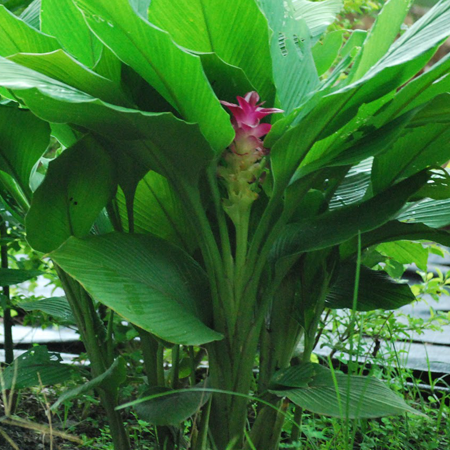

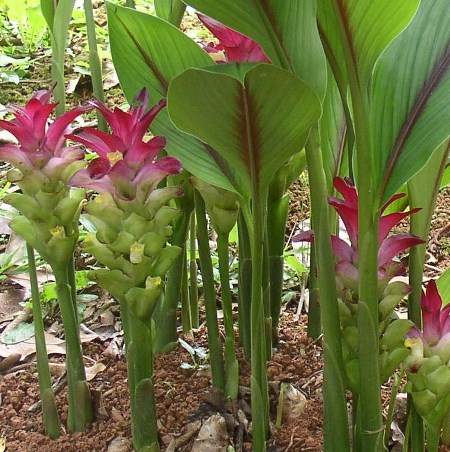
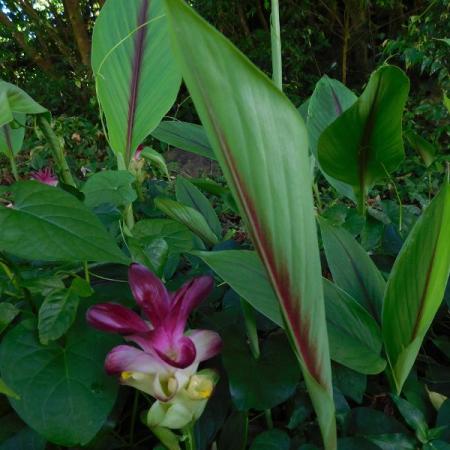
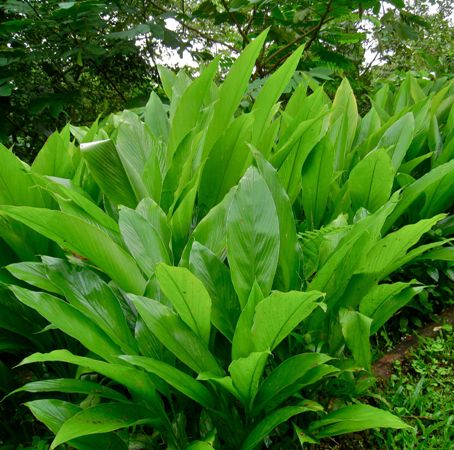
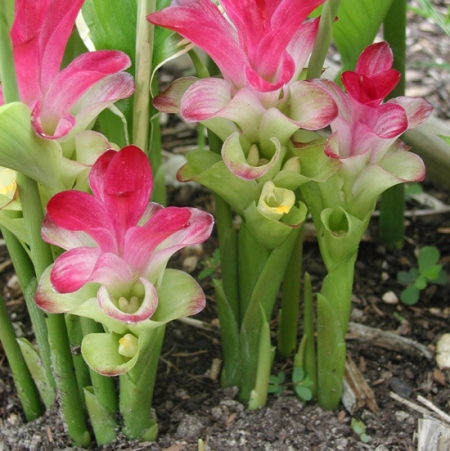
Botanical name Curcuma Zedoaria
Family Zingiberaceae
Source Rhizomes
Origin India
Processing Method Steam Distilled
Color/Consistency Golden yellow viscous liquid
Aromatic Summary / Note / Strength of Aroma Having a warm-spicy, woody & camphoraceous cineolic odor,
Blends with Sandalwood.
Product Abstract
Zedoary root is actually a rhizome with a thin brown skin and a bright orange, hard interior. It’s smell is similar to turmeric and mango. Because of the mango-like fragrance, zedoary is called amb halad in many Indian languages (amb means mango). It is sold as a powder, or dried and sliced with a gray surface with a yellow to gray-white interior.
History
Zedoaria or Amba Haldi, white turmeric is actually the root of the Curcuma zedoaria plant. It is a perennial herb and is member of genus Curcuma and Zingiberaceae family. The Curcuma zedoaria plant is native to India and Indonesia, but has also been cultivated in Europe and in the US.
During Medieval times, white turmeric was appreciated in the spice trade because people thought that its aroma was a combination of mango, turmeric, and ginger. The plant is also stated in Roman de la Rose’s 13th century poem, and was extolled by Nicolas Culpeper, a 17th century herbalist, for its ability to fight poison, expel wind, stay vomiting, stop the menses and fluxing, kill worms, and help the colic.
Harvesting/Extraction Information
Curcuma Zedoaria, grows in tropical and subtropical wet forest regions. It is a rhizome, or underground stem, like turmeric and ginger. The rhizome is large and tuberous with many branches. The leaf shoots are long and fragrant, reaching 1m (3ft) in height. The plant bears yellow flowers with red and green bracts. Pieces of the rhizome are planted, taking two years to mature before it can be harvested.
Common Usage
Caution
Dilute very well before use; for external use only. May cause skin irritation in some individuals; a skin test is recommended prior to use. Contact with eyes should be avoided.
Key constituents
Curzerenone 22.3%
1,8-Cineole 15.9%
Germacrone 9.0%
Camphor 7.8%
b-Pinene 5.9%
Curzerene 5.0%
a-Pinene 3.7%
Isoborneol 2.1%
Camphene 1.9%
b-Elemene 1.5%
(Z)-b-Elemenone 1.5%
Germacrene B 1.2%
(þ)-Limonene 1.2%
2-Nonanol 1.0%
Safety summary
Hazards May interfere with gestation.
Contraindications (all routes) Pregnancy, breastfeeding.
Regulatory guidelines Has GRAS status.
Organ-specific effects
Adverse skin reactions No information found.
Reproductive toxicity Zedoary oil was administered to pregnant mice on gestational days 4–6 as a 1% or 10% aqueous solution with Tween 80 as an emulsifier. Ip doses of essential oil were 156, 310 and 625 mg/kg on gestational days 2–4, and sc doses were 600 and 900 mg/kg/day on gestational days 4–6. Prevention of implantation was dose-dependently successful, ranging from 10% to 80% ip, and from 70% to 90% sc. The oil prevented 77% of pregnancies in female rats when given ip at 300 mg/kg on gestational days 7–9. It prevented 16% and 100% of pregnancies in female rabbits when administered intra-vaginally at 60 or 400 mg/kg/day on gestational days 5–9
and 2–4, respectively (An et al 1983). The oil was steam distilled, but no compositional details were given. Ethanol extracts *Isomer not specified and decoctions of zedoary rhizomes also have antifertility effects (Kong et al 1986). Subsequent research shows a strong link between the embryotoxic effect of zedoary oil and its antiangiogenic action.
Hepatotoxicity: Single oral doses of 12.5, 25 or 50 mg/kg of either germacrone or curcumenol showed dose-dependent protection against liver injury induced in mice by D-galactosamine /lipopolysaccharide or TNF-a.
Systemic effects
Acute toxicity No information found.
Carcinogenic/anticarcinogenic potential A Chinese hydrodistilled zedoary oil was cytotoxic to mouse melanoma B16BL6 cells (IC50 41.8 mg/mL), and to human hepatoma SMMC-7721 cells (IC50 30.7 mg/mL). Zedoary oil also inhibited angiogenesis in mice (Chen et al 2011). The essential oil analyzed by Mau et al 2003 (see above) was cytotoxic to human leukemia HL-60 cells, with an IC50 of 500 ppm (Lai et al 2004). a- Caryophyllene and b-elemene display anticarcinogenic activity. Germacrone dosedependently inhibited the growth of human breast cancer cells (MCF-7 and MDA-MB-231) in vitro (Zhong et al 2011). Curzerenone has been used as an anticancer agent in China (Hsu 1980).
Comments
No NOAEL for reproductive toxicity can be extrapolated from the Chinese data cited above. We could find nothing to suggest which constituent(s) of zedoary oil might be responsible for its antifertility effect.